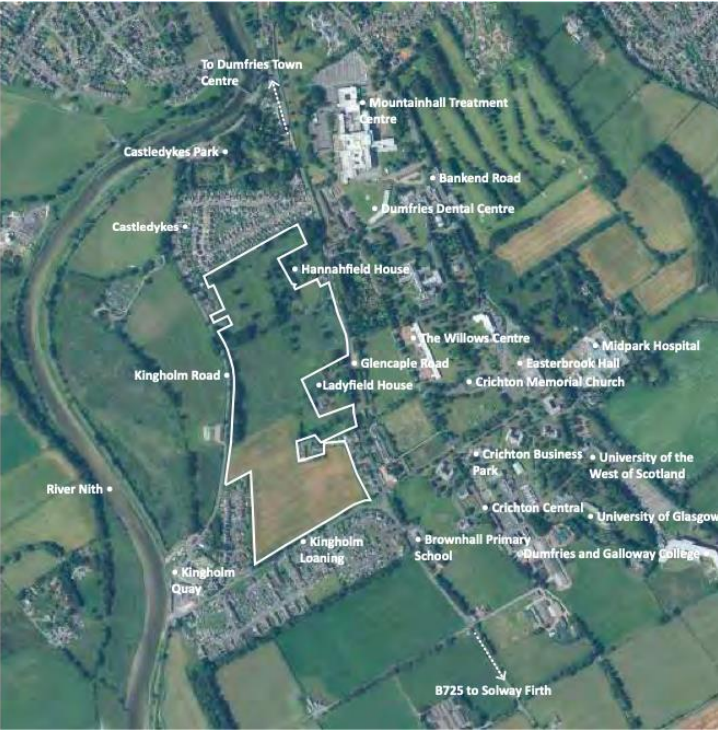Two IRT members attend UN Experts meeting on Home/Family and Climate.
Published: 25 October 2023
Digital Society and Economy member - Bridgette Wessels and visiting fellow, Jennifer Challinor - were invited to produce a paper and attend the UN Experts meeting on Home/Family and Climate. The meeting was at the Nottingham Conference centre on the 28th and 29th September.
Bridgette and Jennifer were delighted to be involved in the Expert meeting because they have been working on the idea of connected homes and homes of the future for over two years. They undertook a small project that looked at how households wanted to live with digital technology and how they wanted to be connected, socially, digitally and with their environment. The Connected Homes report into a larger and highly innovative project led by the Crichton Trust, which is the Ladyfield Site.
To address the very real concerns the UN raises, Bridgette argues that there is a lack of focus on homes and their relationship with neighbourhoods as spaces of services, sociality, and the environment. Working towards homes which are net-zero by default requires approaches that work from a natural habitat or in rewilding where homes and households become active partners in a process of dwelling rather than passive users of natural spaces and local services. This means asking how natural environments of all types interact in the shaping of homes and neighbourhoods. It also means considering how household wellbeing can be embedded into meaningful connected localities that are net-zero. This requires research in developing a new conceptual and analytical framework, such as theoretical development based on secondary analysis and case studies that are then tested and developed further through applied research in different contexts.
The first step in developing such a framework is conceptualising of home as relational and how these relations embed homes within net-zero practices, underpinning resilience of home and environment. This involves internal household relations and practices of working, relations of home with services, and built and natural environments. Using home as a relational concept, dwelling is comprised of households, accommodation, neighbourhoods, nature, and utilities that can start to inform how to develop homes and neighbourhoods that are net-zero by default. Here the value of the relationship with Jennifer at the Crichton Trust can be seen because taking some of these ideas, Jennifer and her team developed the Ladyfield Site plan, which is world-leading and has recently won the Scottish Design of the Year Award.
The Ladyfield site (see Fig. below) is c.22 hectares of undeveloped land approximately 2.5km south of Dumfries next to The Crichton, which is an internationally significant estate owned by Dumfries and Galloway Council on long-term lease to The Crichton Trust. The Crichton Trust set out to create a sustainable housing model that can be adapted all over the world, one that is informed by three integrated themes: developing housing from the wisdom of residents (people); working for the wellbeing of people through the preservation of nature, connection to others, and using new technologies to support wellbeing and enable people to live in their community for longer (place); and developing energy efficient homes and self-sufficient community that works with and for the protection and recovery of the natural world (planet).
Figure. The Ladyfield site

The Ladyfield development is an early exemplar of how homes can be socially and environmentally shaped to dwelling that is net-zero by default. Funded by the UK Community Renewal Fund, which supports people and communities most in need across the UK, the project sought to develop innovative homes and neighbourhoods of the future that supported people across the lifecourse, their wellbeing and their natural environment. The Crichton Trust worked collaboratively with Collective Architecture, lead consultant/architect, RaeburnFarquharBowen, landscape architect, nbm Construction Consultants, cost consultants, and Buro Happold, an environmental/ transport/infrastructure/utilities consultant. These partners worked with households, designers and developers to provide a strong foundation for the Ladyfield development. The community and partnership approach meant that the vision and development of the plan resulted in a relational approach between people, place and planet. Using innovative design, new technologies and materials and the latest ideas of how to work with and protect the environment meant that the Ladyfield site can address climate change. It does so in ways that work from how people want to live, in making homes adaptable as needs change over the lifecourse, creating sociable and sustainable neighborhoods and in reconnecting people with nature. The Ladyfield model provides a radical new vision in its holistic and relational approach. It takes mechanistic approaches to housing types, neighbourhood proximity, and access to work, education, and health into a relational paradigm of lived neighbourhoods – natural and social. It moves climate change approaches beyond narrowly understood electrical and carbon neutral technologies into working with communities, neighbourhoods, and the home in creating meaningful, connected and sustainable living.
In the meeting, the participants were impressed by the Ladyfield plan, appreciative of its holistic and relational approach. Jennifer and Bridgette are now participating in the development of a set of recommendations for the UN Climate Action plans.
One of our visiting fellows, Jennifer Challinor can been see in the link discussing homes and climate change. Jennifer, with Bridgette Wessels, presented a paper on homes and climate at an UN conference and they are involved in drafting a set of recommendations for the UN.
First published: 25 October 2023

